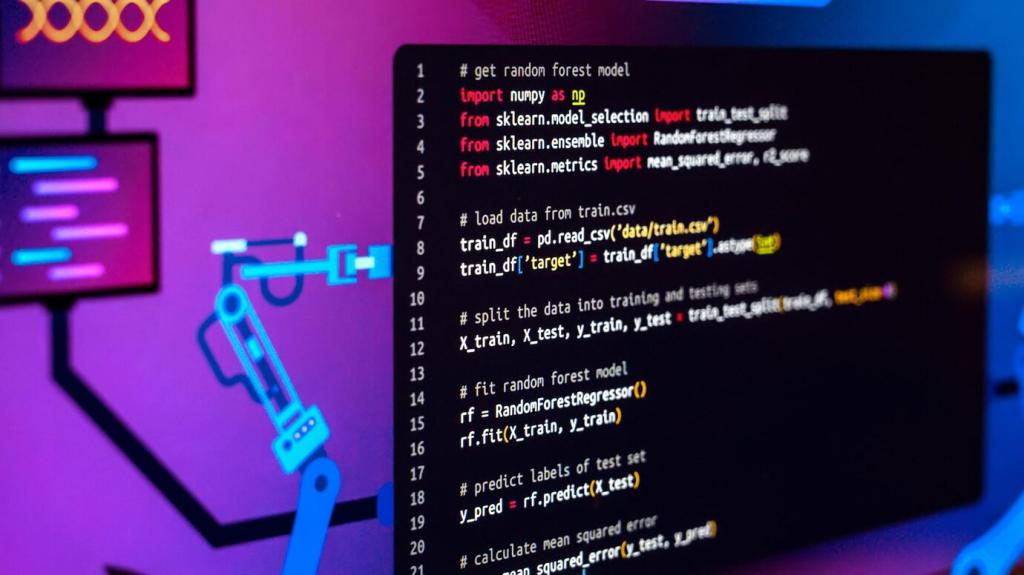Building for Tomorrow: Sustainability and Scalability in Low-Code Solutions
Why Sustainable Low-Code Matters
From Prototype to Platform
A municipal services team once turned a quick permit tracker into a citywide case system by standardizing components, naming conventions, and connectors. Their early discipline minimized rework, simplified onboarding, and extended the app’s life, proving sustainability begins before the first deployment.
Environmental Footprint of Workflows
Every polling loop, inefficient query, and oversized schedule consumes resources. Favor event-driven triggers, consolidate tasks, and prune redundant steps. Audit your automations today, measure runtime and calls, and share one change you made that lowered compute without sacrificing functionality.
Business Longevity and Compliance
Sustainable low-code respects audits, data residency, and access controls. Build with portable standards, document dependencies, and ensure every change is traceable. This protects continuity during growth, vendor shifts, or regulatory reviews while keeping scalability plans aligned with governance.
Designing for Scalability from Day One
Replace frequent polling with webhooks, message queues, and change-data-capture. Event-driven patterns reduce waste, flatten traffic spikes, and improve responsiveness. Start small: one webhook replacing a minute-based poll can deliver cleaner logs, fewer API calls, and clearer scaling behavior.
Designing for Scalability from Day One
Keep flows stateless by using durable stores for checkpoints and shared state. Smaller, focused microflows are easier to parallelize and scale horizontally. When a surge hits, extra workers can pick up tasks without complex coordination or hidden in-memory coupling.


Governance Without Friction
Curate approved connectors, UI templates, and automation snippets. Centralized patterns reduce duplication, shorten review cycles, and standardize security. Encourage contributions with clear guidelines, and invite readers to submit one component your team reuses across multiple apps.
Governance Without Friction
Use semantic versioning for components and flows. Promote releases through dev, test, and prod with automated checks. Canary deployments and feature flags reduce risk during scale changes, letting teams validate performance before fully rolling out updates.
Governance Without Friction
Bake least-privilege permissions, secret management, and tenant isolation into templates. Sustainable scalability depends on safe defaults that withstand growth. Document every role, connector, and data path so audits are quick and onboarding remains painless.


Performance and Cost Efficiency
Instrument dashboards for throughput, latency, retries, and failures. Define service-level objectives before issues arise. With clear traces and metrics, teams spot noisy steps, right-size resources, and celebrate improvements. Share your favorite low-code metric that predicts trouble early.
Performance and Cost Efficiency
Choose serverless for bursty workloads and containers for steady, predictable traffic. Schedule heavy jobs during off-peak hours and align batch windows with data readiness. Sustainable scaling balances responsiveness, reliability, and infrastructure efficiency without overprovisioning.
Sustainable Teams and Culture
Offer short, practical training on patterns, naming, and security basics. Provide a safe sandbox, a review path, and clear escalation routes. With supportive guardrails, citizen developers ship useful, scalable solutions without creating risky shadow systems.
Sustainable Teams and Culture
Generate living docs from app metadata, data models, and deployment pipelines. Tie architecture diagrams to reality by automating updates during releases. Sustainable documentation lowers onboarding time and encourages consistent practices across changing teams and priorities.


Testing and Reliability at Scale
Mock external APIs and validate schemas regularly. Contract tests catch breaking changes before production traffic suffers. They also clarify responsibilities between teams, easing collaboration as integrations multiply across your low-code landscape.


Roadmap and Community Engagement
Embed in-app feedback, analyze usage telemetry, and prioritize changes that reduce toil. When users feel heard, adoption rises naturally. Tell us which small improvement most improved your team’s day-to-day experience and why.
Roadmap and Community Engagement
Adopt OpenAPI, BPMN, JSON Schema, and OData where possible. Manage infrastructure as code for repeatable environments. These choices make migration feasible and growth safer, ensuring sustainability even when platforms or vendors change.
